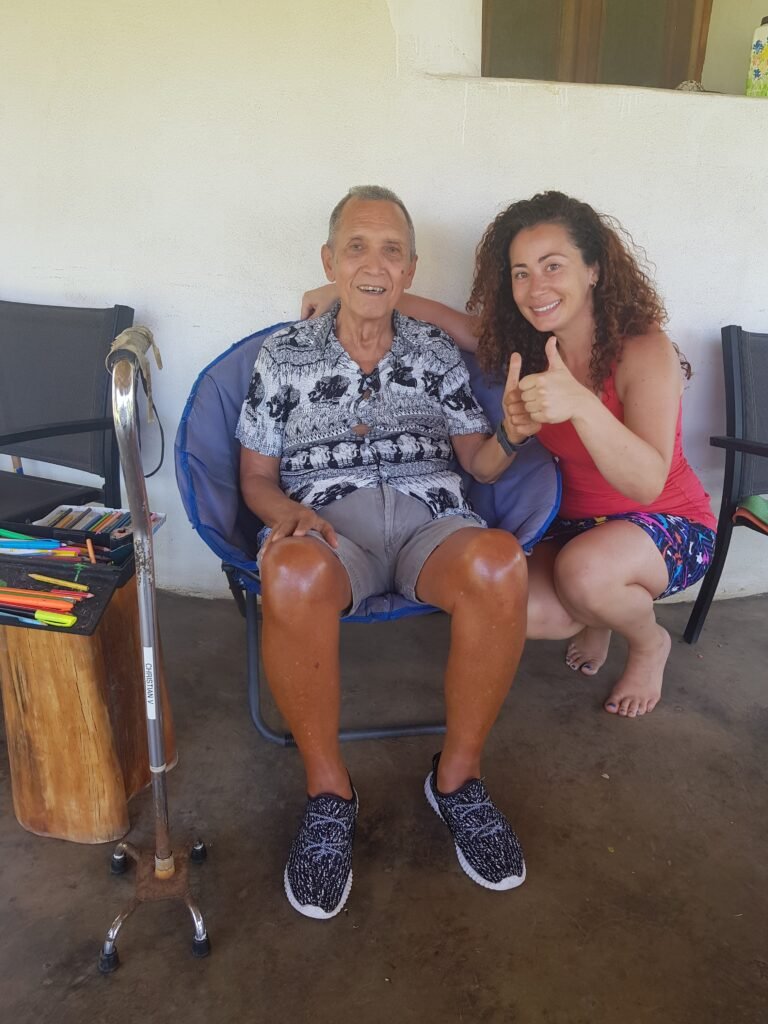Why YOU should Consider a Plant-Based Diet?
Have you considered adding more plants to your diet? Or perhaps going plant-based, even for just a few days or once a week, like the very popular “meatless Mondays”. Well, this week’s podcast recording might encourage you to consider it more seriously.
My podcast guest, Grace Van Berkum, founder of internationally known Gracious Living Oasis (GLO) retreats, enlightens us on using food as medicine to reduce inflammation. She inspires us by creating amazing life-changing experiences at her retreat and shares some tips on what her clients do once they go home to keep the transformation sustainable.
But before I get into the program details. I invite you to listen to the details of her father’s amazing story. He was diagnosed with Alzheimer’s and really starting to show signs of neurodegeneration, but just after 19 days of natural remedies, like sun, movement, healthy plant-based foods, and socializing, there were some remarkable results. Today, he is doing so much better. He is off his medication and managing his Alzheimer’s but, most importantly, it is not progressing. Her father’s unbelievable story, inspired Grace to build a retreat center so she could offer this opportunity of transformation to everyone who is looking for a reset.

How Do You Begin Your Plant-Based Journey?
Grace advises us to start with small baby steps, not to overwhelming and to make things more manageable and sustainable. In her detox programs, she begins with Level 1, which consists of introducing two gluten free meals a day. Level 2, is about increasing your live foods, so Grace suggests something like smoothie bowls for breakfast. As the body adapts to that, we can use cleansing herbs to cleanse the internal organs and the colon. For more details on the Role of Herbs in Holistic Healing, listen to the Self-Care goddess podcast episode #19 and #20 with Chris Lamont on here. As we are comfortable with this, we can move up to the next level, which is vegan ketogenic, and includes more liquids. The next level 3, is about ensuring your meals are 1/2 raw foods and 1/2 cooked with superfoods. Level 4 consists of completely eliminating grains, and legumes. And level 5 is only liquids. We use good anti-inflammatory plant-based protein and healthy fats in our liquids. This ensures that the soups and liquids are still filling. Liquids help to cleanse our body at a faster rate and aid digestion. Digestion is the foundation of your health.
What Are The Benefits Of Raw Food? Why Is It Good For Us?
Grace explains that eating living foods or raw foods works really well for people with a slower metabolism. This is because of the enzyme components. When we cook our food or eat processed foods, we kill the enzymes. It is not necessary to be entirely raw, but we must incorporate more enzymes in our diet even if we are eating cooked foods. To start with raw foods, try making a smoothie in the mornings. If you are eating rice and beans, shred some carrots, beetroot and cabbage and put it on top or mix it in there. This way, we get some raw foods mixed with cooked foods. While eating soups or curry, eat a side salad with it. Eat enzymes first to help digest your meal. Incorporate more herbs like raw cilantro, basil and rosemary. As we adapt to the raw diet, start adding in 1 raw meal instead of a cooked meal a week. In my opinion, when you create something vegan, don’t compare it to the original recipe, call it something totally different to avoid comparing it to the original one, especially if you’re making it for family and friends. Check out some of my raw vegan recipes here.

What Do You Need In Terms Of Kitchen Gadgets?
In terms of kitchen appliances, first buy a simple blender. You need a blender to make smoothies, soups and sauces. Next, invest in a food processor. Once you get comfortable with that, after a month, try to get a spiralizer that is cheap and easy. And lastly, after you are totally adapted to the diet, invest in a dehydrator because they are big and cumbersome. The dehydrator is like a little oven, but it cooks it at such a low heat for a longer period of time, so you don’t cook out the enzymes. So, although it tastes crispy and cooked, it is still considered raw, because the enzymes haven’t been denatured by a high heat temperature. Most often, when people do too much too soon, they don’t enjoy the process and start to feel overwhelmed. The best approach is to start small, slowly and enjoy the journey.
Meal Planning Tips
Try and prepare your meal with what is available. Find what’s local in your area and figure out how to use those or find local substitutes. Maximize the recipes to include plant-based and fresh food. Clean up the diet more and get a variety of different sources of proteins and good fats.
Be open to trying new things, as a majority of people who are imbalanced with their health are very rigid with what they’re eating and are not getting a plethora of nutrients.
Expand your repertoire through different foods, trying different herbs and recipes. To begin with, finding one or two recipes for the week, try out a smoothie recipe or a new soup or salad dressing recipe and stay there and enjoy the process, get into the routine of buying that and making that, incorporating it into your eating schedule. After a few weeks, add some more recipes as you progress.
I would also encourage you to be more self-sustainable and grow a vegetable garden by planting and gardening as much as possible. Understand every little ingredient in what you are eating. This helps you to connect with your food as you take a few minutes to really understand what’s on your plate.
Say grace and give thanks for your food to get grounded. This also slows down the nervous system and gets you into a parasympathetic nervous system state, which is responsible for “rest & digest”, so that digestion works better. Check out my “Mindful Eating Eating Breathwork” video here because I agree with Grace and it’s proved by science, not that taking the time to be more mindful before you eat allows you to better digest and assimilate your food so that you can nourish every cell in your body.
Grace believes that a big part of why people are sick and unhealthy is that they’ve lost their connection to their food and their own bodies. And part of self-care is looking at your food and appreciating what you have made for yourself and body.
Daily Tips And Tricks
A wonderful tip is to start your day with lemon water or lime water for cleansing. Simple things like staying hydrated all day help the body detox daily. Avoid drinking beverages that are dehydrating and include abundant vegetables, which are detox foods like garlic and onions, bitter dark green leafy green vegetables to help the body release toxins. Ensure that you get adequate sleep. Detoxify your body with deep breathing exercises in the mornings before and after Yoga. Incorporating conscious breathing will help your body cleanse and reduce inflammation. It is an amazing habit before every meal to do breathing exercises. To find out more on the amazing power of breathwork, listen to episode #15 of the Self-Care goddess podcast with Jennifer Stevenson here.
Make food and eating your meditation. Being more conscious of your lifestyle habits, what you’re putting into your body, what you’re surrounding yourself with, how you’re living and how you’re sleeping can all help your body detox and cleanse more efficiently.
Self-Care is about slowing down and getting back to simplicity. The healing process begins when our body starts to release more because it starts to feel safe to release toxins, adopt to nature’s pace and get into the rhythm of nature. A retreat is so beneficial simply because, in such a short period of time, just by removing all the interferences, we allow the body to self-heal. For more insights and tips on how you can be creative in the kitchen, listen to the Self-Care goddess podcast episode #28 with Grace Van Berkum here.
Contact me if you would like some guidance on how to begin your plant-based journey. Schedule your FREE Introduction Call here.
Check out these delicious and simple plant-based meals like the Quinoa & Butternut Squash Salad, Quinoa & Lentil Burgers, Creamy Rice Bowl, Chia Breakfast Pudding

